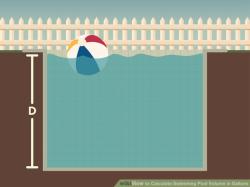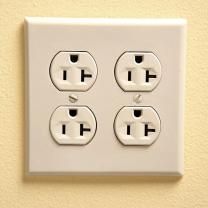What is the best tool for cutting?
The best tool for cutting depends on the material you need to cut, the type of cut you want to make, and your specific requirements. Different cutting tools are designed for various purposes, so it's important to choose the right tool for the job. Here are some common cutting tools and their applications:
Utility Knife (Box Cutter):
- Purpose: Utility knives are versatile and can cut a wide range of materials, including cardboard, paper, plastic, and fabric.
- Best for: General-purpose cutting and precision work.
- Considerations: Ensure the blade is sharp and retractable for safety.
Scissors:
- Purpose: Scissors are designed for cutting paper, fabric, and lightweight materials.
- Best for: Crafting, sewing, and office tasks.
- Considerations: Choose scissors with comfortable handles and sharp blades.
Circular Saw:
- Purpose: Circular saws are power tools that can cut through wood, plywood, MDF, and other materials quickly and efficiently.
- Best for: Straight cuts in wood and construction projects.
- Considerations: Ensure proper safety precautions, such as using safety glasses and following manufacturer guidelines.
Jigsaw:
- Purpose: Jigsaws are versatile power tools for making curved or intricate cuts in wood, plastic, metal, and other materials.
- Best for: Curved cuts and detailed woodworking.
- Considerations: Select the appropriate blade for the material and desired cut.
Miter Saw:
- Purpose: Miter saws are designed for making precise angled cuts in wood, typically for framing or molding.
- Best for: Accurate crosscuts and miter cuts in wood.
- Considerations: Choose the right blade and adjust the saw for the desired angle.
Hacksaw:
- Purpose: Hacksaws are hand tools for cutting metal, plastic, and other rigid materials.
- Best for: Cutting metal pipes, rods, and small metal pieces.
- Considerations: Use the appropriate blade for the material being cut and maintain blade tension.
Bolt Cutters:
- Purpose: Bolt cutters are designed to cut through thick, hardened materials like metal rods, chains, and bolts.
- Best for: Cutting heavy metal objects.
- Considerations: Select bolt cutters with the right cutting capacity and handle length for the job.
Tile Cutter:
- Purpose: Tile cutters are specialized tools for cutting ceramic and porcelain tiles.
- Best for: Precision tile cutting for flooring and wall installations.
- Considerations: Choose a tile cutter appropriate for the size and type of tiles you're working with.
Angle Grinder:
- Purpose: Angle grinders are versatile power tools for cutting, grinding, and polishing various materials, including metal, stone, and concrete.
- Best for: Heavy-duty cutting and grinding tasks.
- Considerations: Always wear protective gear and use the appropriate cutting or grinding wheel.
Chainsaw:
- Purpose: Chainsaws are power tools used for cutting down trees, trimming branches, and processing firewood.
- Best for: Tree felling and large woodcutting tasks.
- Considerations: Chainsaw operation requires proper training and safety precautions.
When choosing the best cutting tool, consider factors such as the material to be cut, the type of cut (straight, curved, or angled), your level of experience, and safety precautions. Always use the appropriate tool for the job and follow safety guidelines to ensure efficient and safe cutting operations.
1. Cutting Tools: Choosing the Best Tool for Your Sewing Needs
When choosing a cutting tool, it is important to consider the material you will be cutting, the thickness of the material, and the desired accuracy of the cut.
Here are some tips for choosing the best cutting tool for your needs:
- Consider the material you will be cutting. Different materials require different types of cutting tools. For example, a fabric cutter will not be effective at cutting metal.
- Consider the thickness of the material. The thickness of the material will determine how much force you need to apply to make a cut. A thicker material will require more force to cut than a thinner material.
- Consider the desired accuracy of the cut. If you need to make a precise cut, you will need to use a cutting tool that is designed for precision cutting.
Here are some of the most common types of cutting tools:
- Scissors: Scissors are a versatile cutting tool that can be used to cut a variety of materials, including fabric, paper, and cardboard.
- Fabric cutter: A fabric cutter is a specialized cutting tool that is designed for cutting fabric. It has a sharp blade that can easily cut through multiple layers of fabric.
- Rotary cutter: A rotary cutter is a circular cutting tool that is used to cut fabric, paper, and other materials. It is a good choice for making long, straight cuts.
- Utility knife: A utility knife is a versatile cutting tool that can be used to cut a variety of materials, including plastic, wood, and cardboard. It is a good choice for making cuts of various shapes and sizes.
- Saw: A saw is a cutting tool that is used to cut wood, metal, and other hard materials. There are many different types of saws, each of which is designed for a specific purpose.
Cutting with Precision: Selecting the Right Tool for the Job
When selecting a cutting tool for precision cutting, it is important to consider the following factors:
- Sharpness: The blade of the cutting tool must be sharp in order to make a precise cut.
- Accuracy: The cutting tool must be accurate enough to make the desired cut.
- Control: The cutting tool must be easy to control so that you can make precise cuts.
Some of the best cutting tools for precision cutting include:
- Hobby knife: A hobby knife is a small, sharp knife that is used for precision cutting. It is a good choice for cutting paper, cardboard, and other thin materials.
- Scalpel: A scalpel is a sharp knife that is used for surgery and other precision cutting tasks. It is a good choice for cutting delicate materials, such as tissue paper and plastic wrap.
- Shears: Shears are a type of scissors that is designed for precision cutting. They have sharp blades that are close together, which allows for accurate cuts.
- Wire cutters: Wire cutters are a type of pliers that is used to cut wire. They have sharp blades that can easily cut through wire of various gauges.
The Perfect Cut: Tools and Techniques for Precision Cutting
In addition to choosing the right cutting tool, there are a few other things you can do to achieve a precise cut:
- Use a sharp blade. A sharp blade will make a cleaner cut than a dull blade.
- Use a cutting mat. A cutting mat will protect your work surface and help you to make straight cuts.
- Use a ruler or other guide. A ruler or other guide will help you to make straight and accurate cuts.
- Take your time. Don't rush when making a precision cut. Take your time and focus on making the cut as accurate as possible.
With the right cutting tool and proper technique, you can achieve precise cuts every time.












